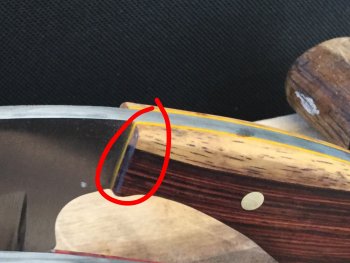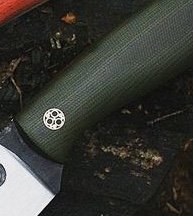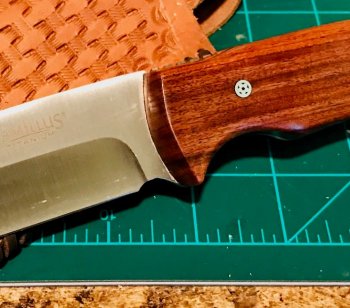My advice has already been mentioned..... but I'll add my thoughts. That being, get the pin holes drilled (with the PROPER size bits)

then put the scales in place with pins,PROFILE the handle material to match the knife (this something a lot of folks miss, and then don't understand why the front of their handle looks "funky". Once the handle material profiled, take the off, then pin the two handle together...... then shape and COMPLETELY FINISH THE FRONTS OF THE HANDLE MATERIAL.
How do you decide on a shape?? Try to picture the OVERALL knife in it's finished form, and create a shape that complements the overall shape/design of the knife. Don't be afraid to try different shapes! I did, and stumbled upon a unique design where the top of the handle material sweeps rearward..... it works well and for a while it separated my knives from others....until other makers picked up on it, and started doing it too.

Like this:
Once you have the front of the handle scales shaped and finished, the idea is to NOT touch them again period....they are not done. The way you protect them when gluing is to pin them in place, then use Vaseline on the fronts of the handles and blade..... then glue it up. Any cured glue will pop off easily with a sharpened brass rod. I have a "scribe" made specifically for this purpose.....nothing more then a 3/32" brass pin, ground to a fine point, a held into a handle with a 4-40 set screw..... of you can just sharpen an brass rod and us it that way..... why brass? It won't scratch the blade!










